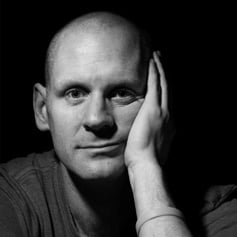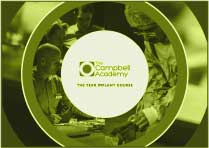How The Campbell Academy CBCT Essentials Masterclass came to be


My very first CBCT scanner was a Carestream 9000 and I was one of the first few in the country to have that machine.
This machine was a revelation with a small field of view and therefore acceptable reasons to take CBCTs for single tooth gaps in the lower.
The dose comparison data at that stage was favourable for Carestream, as produced by Ludlow around the early 2000’s where he compared all the machines he could get his hands on.
It was all relative though – the dose was still pretty high on the 9000 but it was lower than the rest of the machines and lower than medical CT which is where we were at that time.
The machine was installed and we had about a two-hour training session from the engineer (who was great, but not a CBCT trainer) and away we went and started to take CBCTs.
On the first one I missed everything and I’m not sure what I examined but it was probably something like the wall of the CBCT room! I still have that CBCT and I could pull it up to see how terrible it actually was.
There was nothing in place to learn, no one to teach me, so we spent hours figuring it out, debunking it and debugging it. Reading the books that were mostly produced in the US about how to interpret CBCT scans.
After using this for a while, we went to Bern and looked at what they were doing with their Morita CBCT machine, the images from which were absolutely unbelievable (but it turned out the doses were pretty high too) and in the end we hitched up with Michael (Bornstein) and got him over here to being the journey of our Masterclass, initially on one day, teaching us how to report our CBCTs better.
At dinner with Michael Bornstein we wrote down on a fag packet what a CBCT course would look like and why and so, the course that we now provide once a year now was born.
The thing about this stuff though it that it moves along and it moves on and now you can do online CBCT training for about £5 if you just want to tick a box. If that’s what you’re looking for then steer clear of this course because it’s absolutely not that.
What this course is designed to do is to teach you how to report CBCTs in your practice so that it’s valuable. It teaches you how to medically report CBCTs and it teaches you how to functionally report CBCTs.
A radiologist can report a CBCT, but only an implant surgeon can functionally report it for placing implants and only an endodontist can report it for endodontics. The reason for that is that true radiologists don’t provide the treatment, so there is always a tension between the operator and the interpreter. So, to train the operator to interpret is to turn the surgeon into a physician.
Perhaps I haven’t been absolutely clear at times what this course is for, but that’s what it’s for and the way you do that is to give people scans, ask them to report them and then mark them and feed them back.
That’s how you teach, define and prove competency.
On CBCT now, almost everyone needs to understand the integration of this into a digital workflow of one form or another and that’s included as part of our course.
Our course isn’t cheap (in fact I think it’s the dearest) It’s not supposed to be cheap, it’s supposed to be good.
We restrict the numbers on the course to make sure people get the experience we set out and desire; the course is even better now than it was with continuous improvements year on year for the benefit of our delegates.





Leave a comment